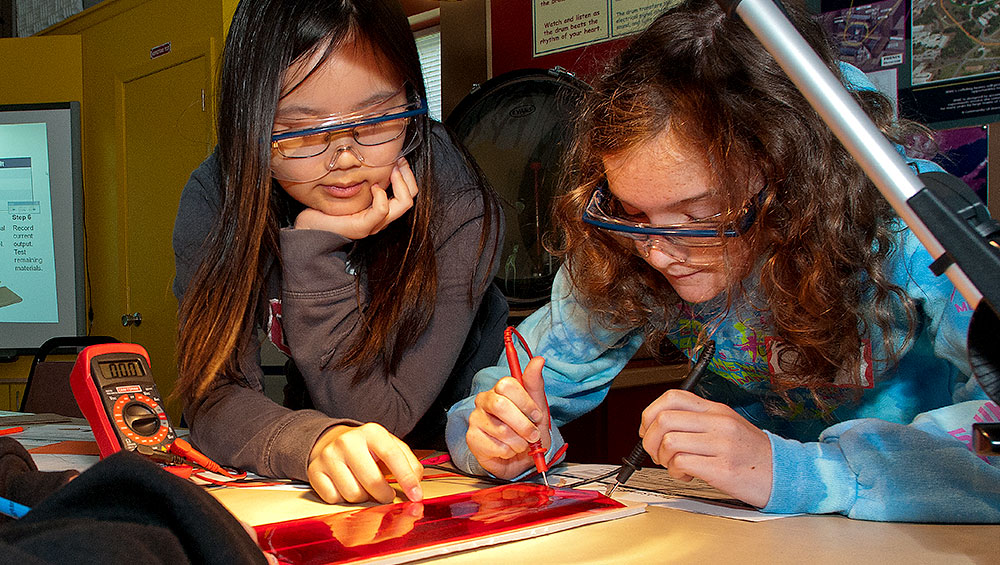Discovering Solar Panels

Students will perform hands-on experiments to explore how photovoltaic solar panel materials work and learn how to position solar panels for maximum energy capture. They’ll see how their experiments connect to research conducted at Brookhaven Lab's Northeast Solar Energy Research Center (NSERC), a testbed for solar energy technologies.
Vocabulary: absorption, angle of incidence, current, milliamp (mA), multimeter, photovoltaic, radiation, reflections, transmission
| Session Information |
|---|
|
To request field trip dates, visit https://oepreg.bnl.gov/.
To explore programs listed in the ESBOCES Exploratory Enrichment catalog and to submit a BOCES contract request, please visit BOCES EE – Brookhaven Lab
NYS Learning Standards
New York State Science Learning Standards
| Disciplinary Core Ideas | Crosscutting Concepts | Science and Engineering Practices |
|---|---|---|
|
PS4.B: Electromagnetic Radiation ESS1.B: Earth and the Solar System |
Cause and Effect Energy and Matter |
Developing and Using Models Planning and Carrying Out Investigations Analyzing and Interpreting Data Constructing Explanations and Designing Solutions |
Next Generation English Language Arts Learning Standards
| Speaking and Listening | Language |
|---|---|
|
Comprehension and Collaboration |
Vocabulary Acquisition and Use |
Next Generation Mathematics Learning Standards
|
MP2: Reason abstractly and quantitatively MP4: Model with mathematics Statistics and Probability: Summarize and describe distributions |





